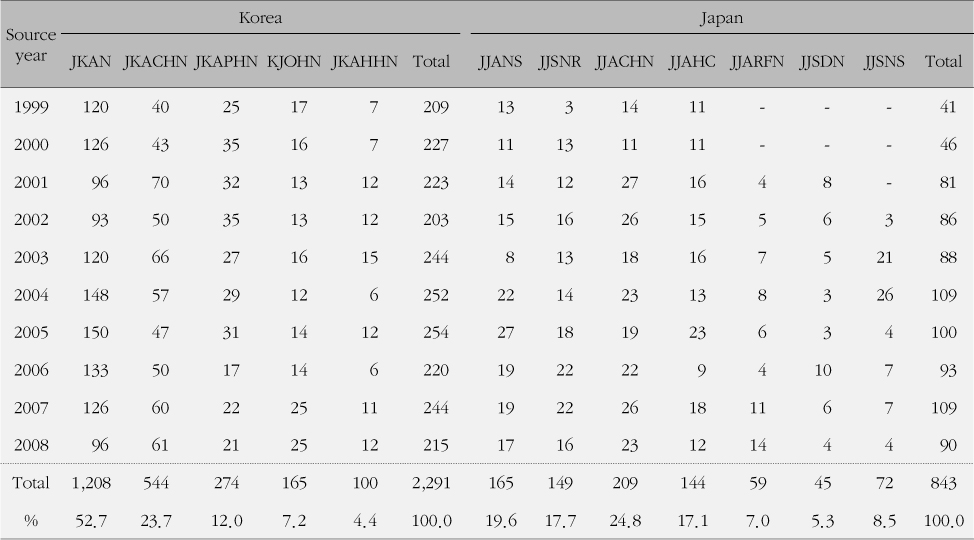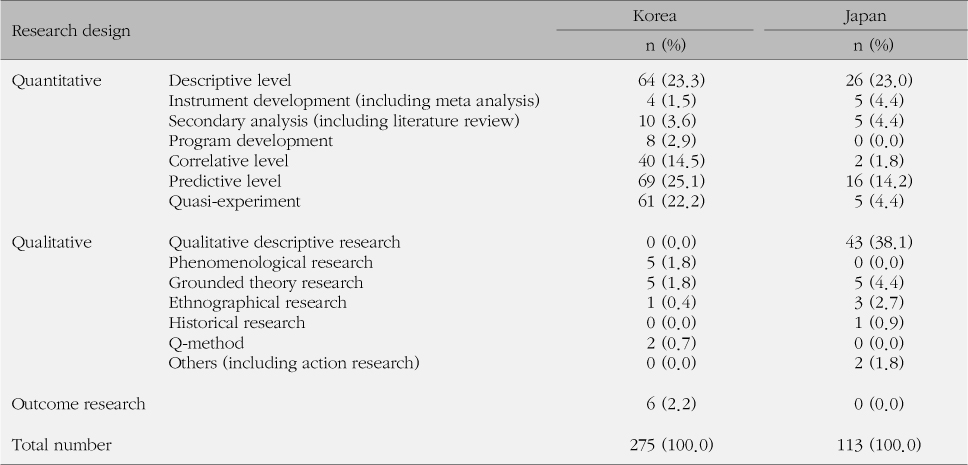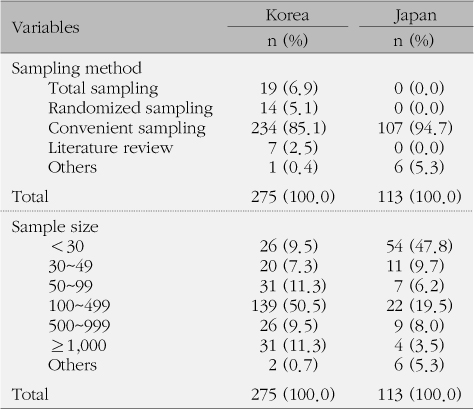References
1. Asahara K. National examination of the perspectives on public health nursing and education for public healthnurse. Jpn J Public Health 2010;57(10):933–935.
2. Burns N, Grove SK. The practice of nursing research: Conduct, critique, & utilization 5th edth ed. Philadelphia: W. B. Saunders Company; 2005.
3. Japan Academy of Community Health Nursing. Journal of Japan Academy of Community Health Nursing Retrieved September 20, 2009. from
http://jachn.umin.jp/.
4. Japan Academy of Home Care. Journal of Japan Academy of Home Care Retrieved September 20, 2009. from
http://jahhc.umin.jp/.
5. Japan Academy of Nursing Science. Journal of Japan Academy of Nursing Science Retrieved September 20, 2009. from
http://jans.umin.ac.jp/.
6. Japanese Association for Research in Family Nursing. Journal of Japanese Association for Research in Family Nursing Retrieved September 20, 2009. from
http://square.umin.ac.jp/.
9. Japanese Society for the study of Nursing and Social work. Journal of Japanese Society for the study of Nursing and Social work Retrieved September 20, 2009. from
http://kangofukushi.sakura.ne.jp/.
10. Japan Society of Disaster Nursing. Journal of Japan Society of Disaster Nursing Retrieved September 20, 2009. from
http://www.jsdn.gr.jp/.
11. Japan Society of Nursing Research. Journal of Japan Society of Nursing Research Retrieved September 20, 2009. from
http://www.jsnr.jp/.
12. Kanagawa K. Prospect of community health nursing in aging era In : Paper presented at the meeting of the 1st Korea-Japan Joint Conference on Community Health Nursing. Seoul; 2007. 11.
13. Kim HJ. New vision of community health nursing for aging era In : Paper presented at the meeting of the 1st Korea-Japan Joint Conference on Community Health Nursing. Seoul; 2007. 11.
14. Korean Academic Society of Home Health Care Nursing. Journal of Korean Academic Society of Home Health Care Nursing Retrieved September 15, 2009. from
http://www.kahhn.or.kr/.
15. Korean Academic Society of Occupational Health Nursing. Korean Journal of Occupational Health Nursing Retrieved September 15, 2009. from
http://www.ksohn.or.kr/.
16. Korean Academy of Community Health Nursing. Journal of Korean Academy of Community Health Nursing Retrieved September 15, 2009. from
http://www.kchn.or.kr/.
17. Korean Society of Nursing Science. Journal of Korean Academy of Nursing Retrieved September 15, 2009. from
http://www.kan.or.kr/.
18. Korean Society of Public Health Nursing. Journal of Korean Academy of Public Health Nursing Retrieved September 15, 2009. from
http://www.ksphn.or.kr/index.php.
19. Lee JY. Community health care program on the public health center in Korea In : Paper presented at the meeting of the 1st Korea-Japan Joint Conference on Community Health Nursing. Seoul; 2007. 11.
20. Murashima S, Matsumoto T, Arata Y. The board of directors' seminar, Public health nurses who tackle and prevent the health problems of the society: What is their model and how can we educate them? J Jpn Acad Community Nurs 2010;13(1):7–17.
21. Okamoto R. Community health care program on the public health center in Japan In : Paper presented at the meeting of the 1st Korea-Japan Joint Conference on Community Health Nursing. Seoul; 2007.
22. Ryu HS. Home health nursing care and home health care in Korea In : Paper presented at the meeting of the 1st Korea-Japan Joint Conference on Community Health Nursing. Seoul; 2007.
23. Shimanouchi S. Home health nursing care and home health care in Japan In : Paper presented at the meeting of the 1st Korea-Japan Joint Conference on Community Health Nursing. Seoul; 2007.
24. Tsuji T. Health care issues: Japan's aging society and appropriate countermeasures. Jpn J Nurs Sci 2007;4(2):71–73.




